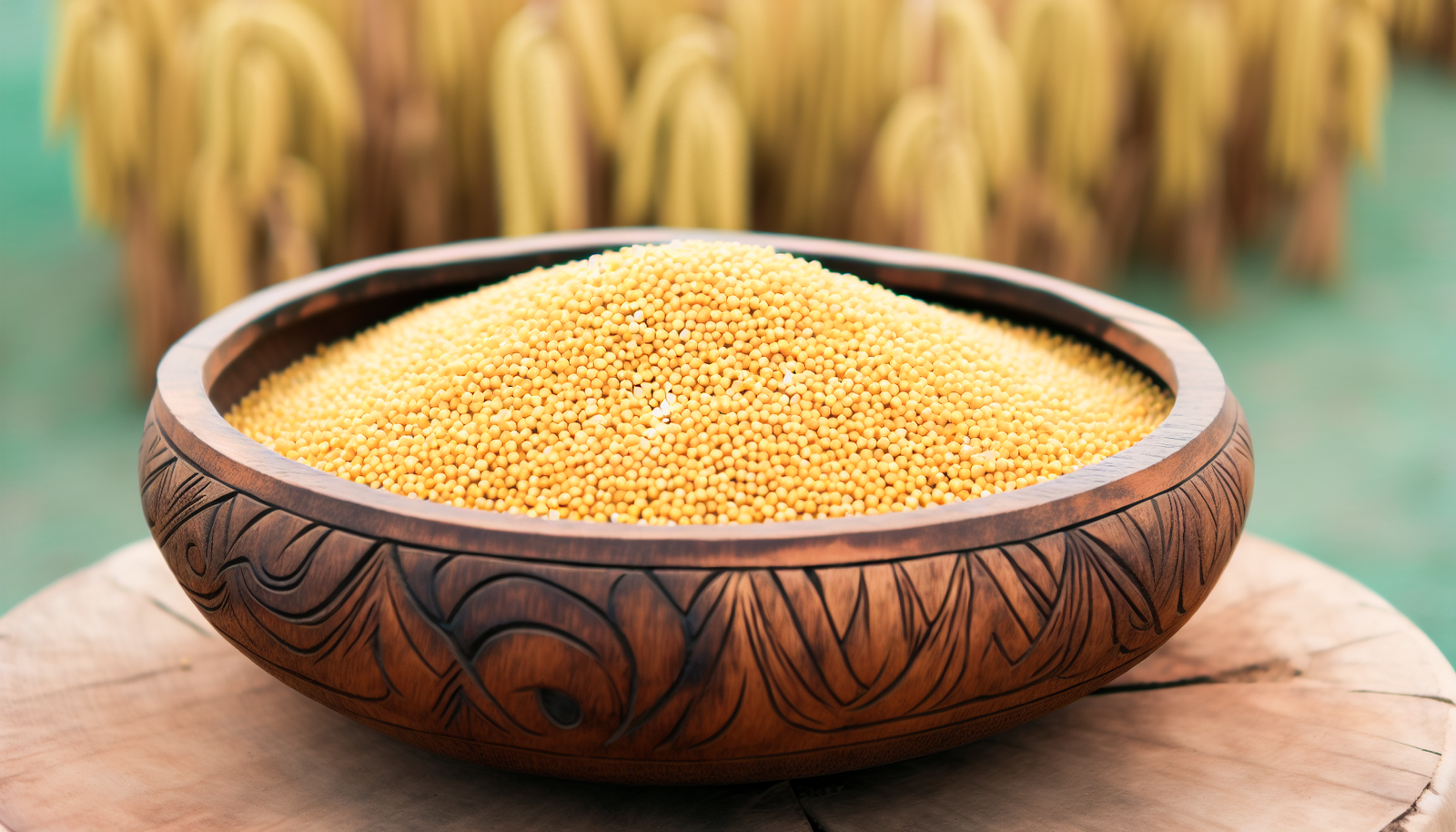The Nutritional and Agricultural Benefits of Foxtail Millet

Foxtail millet, a staple in many ancient civilizations, is known for its enduring agricultural and nutritional value. Originating over 6,000 years ago in Asia, particularly in China and India, foxtail millet has been a crucial crop for sustenance and agriculture. Its adaptability to various climates and poor soil conditions makes it a resilient choice for farmers, especially in arid and semi-arid regions.
Historically, foxtail millet has been a significant part of the diet in regions where it is cultivated. In China, it was one of the five sacred grains and held immense cultural importance. Similarly, in India, it has been a traditional food, often used in festivals and rituals. The grain’s versatility in cooking has made it a staple in various cultural cuisines, ranging from porridges and bread to salads and fermented beverages.
The nutritional profile of foxtail millet is impressive, making it a valuable addition to modern diets. It is a rich source of protein, providing essential amino acids that are necessary for muscle repair and overall bodily functions. The high fiber content in foxtail millet aids in digestion and promotes a healthy gut, helping to prevent constipation and other digestive issues. Additionally, it is packed with vitamins and minerals, including iron, magnesium, and phosphorus, which are crucial for maintaining energy levels, bone health, and metabolic functions.
Compared to other common grains such as rice and wheat, foxtail millet has a lower glycemic index, which helps in regulating blood sugar levels. This makes it an excellent choice for individuals with diabetes or those looking to manage their blood sugar. Moreover, its potential to aid in weight management is significant, as the high fiber content helps in creating a feeling of fullness, reducing overall calorie intake.
In summary, the historical significance and robust nutritional profile of foxtail millet make it a grain worth considering for both agricultural and dietary purposes. Its health benefits, including improved digestion, blood sugar regulation, and weight management, highlight its potential as a superfood in contemporary diets.
Cultivation and Uses of Foxtail Millet in Modern Agriculture
Foxtail millet, scientifically known as Setaria italica, is a resilient crop that thrives in diverse agricultural settings. It is particularly well-suited to regions with semi-arid climates due to its low water requirements and high drought tolerance. Optimal cultivation of foxtail millet necessitates a well-drained, loamy soil with a pH range of 5.5 to 7.5. This crop can be grown in both rainfed and irrigated conditions, making it a versatile option for farmers looking to diversify their agricultural practices.
Modern farming techniques have significantly enhanced the yield and quality of foxtail millet. Practices such as crop rotation, intercropping, and the use of organic fertilizers contribute to healthier soil and more productive harvests. Precision agriculture technologies, including advanced irrigation systems and soil moisture sensors, further optimize water usage, ensuring that the crop receives adequate hydration while minimizing waste.
In addition to its agricultural benefits, foxtail millet is celebrated for its versatility in culinary applications. Traditional recipes from various cultures showcase its use in porridges, flatbreads, and fermented beverages. Contemporary culinary trends have embraced foxtail millet as a nutritious alternative to rice and wheat, incorporating it into salads, soups, and even desserts. Its high fiber content and rich nutrient profile, including essential amino acids, vitamins, and minerals, make it an attractive ingredient for health-conscious consumers.
Economically, foxtail millet presents numerous benefits for farmers. Its resilience to adverse weather conditions reduces the risk of crop failure, ensuring a more stable income. The relatively low input requirements, such as minimal need for synthetic fertilizers and pesticides, further enhance its profitability. Additionally, as a short-duration crop, foxtail millet allows for multiple harvests within a single growing season, increasing overall productivity.
The role of foxtail millet in promoting sustainable agriculture cannot be overstated. Its ability to grow in marginal soils and under limited water conditions makes it an ideal crop for regions facing the challenges of climate change. By integrating foxtail millet into their farming systems, farmers can contribute to food security, environmental conservation, and economic resilience.
